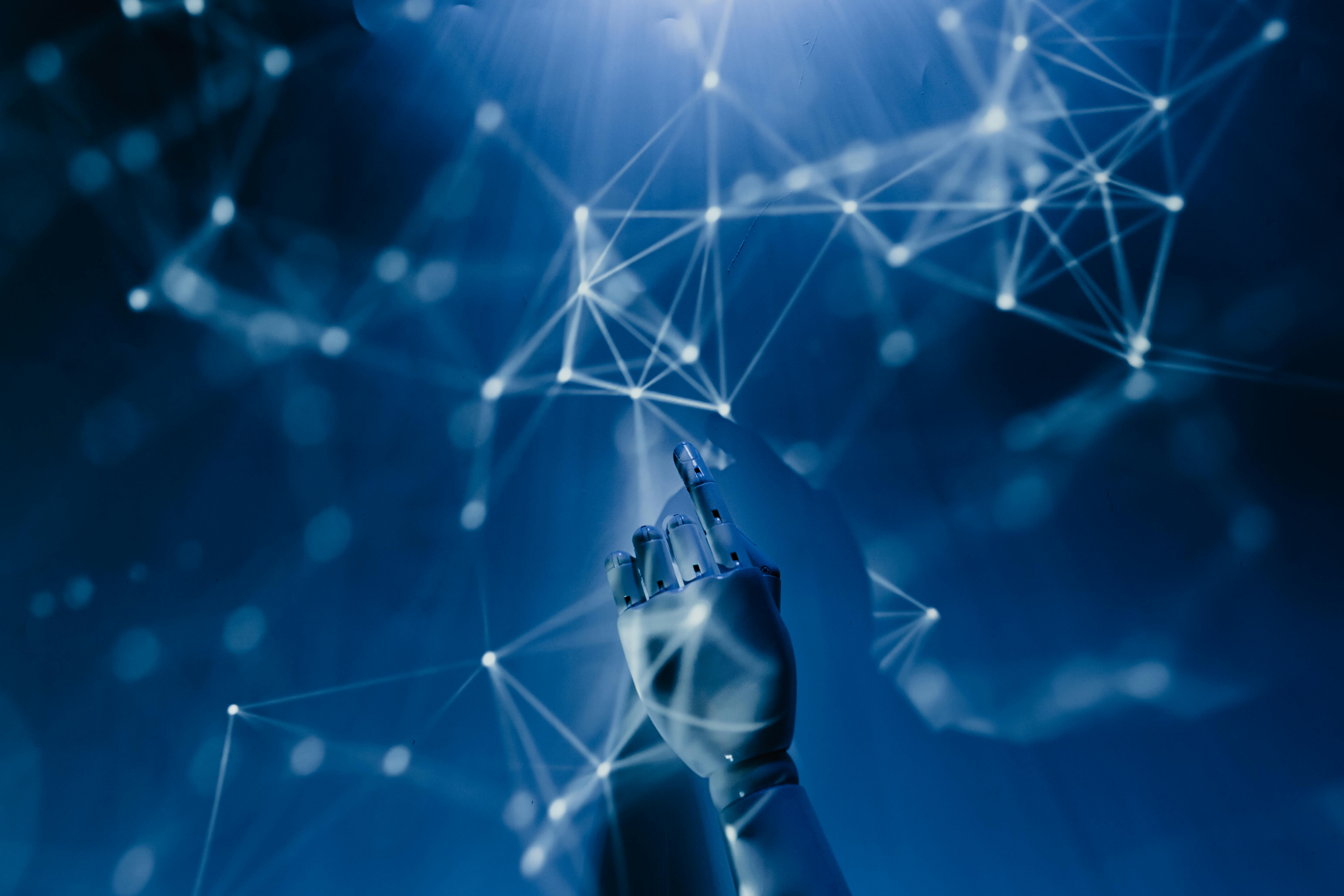
Role of Artificial Intelligence (AI) in Modern Development
June 7, 2024
The Rise of Edge Computing: Transforming the Future of Data Processing
June 7, 2024The Internet of Things (IoT) is transforming the way we interact with the world around us. By connecting everyday objects to the internet, IoT enables real-time data exchange and smart decision-making, leading to increased efficiency, convenience, and innovation across various sectors. From smart homes and cities to industrial applications and healthcare, the impact of IoT is far-reaching. In this blog post, we’ll explore the fundamentals of IoT, its current applications, potential benefits, and the challenges and opportunities it presents.
Understanding the Internet of Things (IoT)
What is IoT?
The Internet of Things (IoT) refers to the network of physical objects—devices, vehicles, appliances, and more—that are embedded with sensors, software, and other technologies to connect and exchange data with other devices and systems over the internet. These connected objects, or “things,” can collect, transmit, and act on data, enabling a wide range of smart applications.
How Does It Work?
IoT devices are equipped with sensors and actuators that gather data from their environment. This data is then transmitted to a central system, such as a cloud-based platform, where it can be analyzed and used to make informed decisions. IoT systems often use machine learning algorithms to process data and automate responses, creating intelligent and adaptive environments.
Current Applications of IoT
Smart Homes
One of the most popular applications of IoT is in smart homes, where connected devices enhance convenience, security, and energy efficiency. Smart thermostats, lighting systems, and appliances can be controlled remotely via smartphone apps or voice assistants like Amazon Alexa and Google Assistant. Home security systems, including cameras and door locks, provide real-time monitoring and alerts, ensuring safety.
Smart Cities
IoT is playing a crucial role in the development of smart cities, where data from various sources is used to optimize urban living. Sensors in public infrastructure can monitor air quality, traffic flow, and energy usage, allowing city planners to make data-driven decisions. Smart streetlights, waste management systems, and public transportation can reduce costs and improve the quality of life for residents.
Industrial IoT (IIoT)
In the industrial sector, IoT is revolutionizing manufacturing and supply chain management. IIoT devices monitor equipment performance, predict maintenance needs, and optimize production processes. By collecting real-time data from machines and production lines, manufacturers can reduce downtime, increase efficiency, and enhance product quality. Additionally, IoT-enabled logistics can improve inventory management and traceability.
Healthcare
IoT is transforming healthcare by enabling remote patient monitoring, personalized treatment, and improved patient outcomes. Wearable devices and medical sensors can track vital signs, medication adherence, and physical activity, transmitting data to healthcare providers for real-time analysis. This allows for early detection of health issues, timely interventions, and more efficient management of chronic conditions.
Agriculture
IoT is driving innovation in agriculture through precision farming and smart irrigation systems. Sensors in the field can monitor soil moisture, temperature, and nutrient levels, providing farmers with data to optimize irrigation, fertilization, and pest control. IoT-enabled equipment can automate planting, harvesting, and livestock management, increasing productivity and sustainability.
Benefits of IoT
Increased Efficiency
IoT systems streamline operations by automating tasks and optimizing processes. This leads to increased efficiency, reduced costs, and improved resource management across various sectors. For example, smart grids can balance electricity supply and demand, reducing energy wastage and lowering utility bills.
Enhanced Decision-Making
The data collected by IoT devices provides valuable insights that support better decision-making. By analyzing real-time data, businesses and organizations can identify trends, predict outcomes, and make informed choices. This data-driven approach enhances operational efficiency and strategic planning.
Improved Quality of Life
IoT technology enhances everyday life by providing convenience, safety, and personalized experiences. From smart home devices that simplify daily tasks to health-monitoring wearables that promote well-being, IoT improves the quality of life for individuals and communities.
Innovation and New Business Models
IoT fosters innovation by enabling new business models and services. Companies can leverage IoT data to create personalized products, offer subscription-based services, and develop new revenue streams. For instance, predictive maintenance services can be offered to industries based on real-time equipment monitoring.
Challenges and Opportunities
Security and Privacy
One of the primary challenges of IoT is ensuring the security and privacy of data. IoT devices often collect sensitive information, making them targets for cyberattacks. Ensuring robust security measures, encryption, and regular software updates are essential to protect data and maintain user trust. Additionally, regulations and standards need to be developed to address privacy concerns and ensure data protection.
Interoperability
With a vast array of IoT devices and platforms available, ensuring interoperability between different systems can be challenging. Developing common standards and protocols is crucial to enable seamless communication and integration of IoT devices. This will enhance the scalability and functionality of IoT ecosystems.
Scalability
As the number of connected devices continues to grow, managing and scaling IoT networks becomes increasingly complex. Ensuring reliable connectivity, data management, and processing capabilities is essential to support the expanding IoT infrastructure. Edge computing and 5G networks are emerging solutions that can address scalability challenges.
Data Management
The vast amount of data generated by IoT devices poses challenges for data storage, processing, and analysis. Efficient data management practices, including data cleaning, aggregation, and real-time processing, are necessary to derive meaningful insights and value from IoT data. Advanced analytics and machine learning algorithms can help manage and interpret large datasets.
Preparing for an IoT-Driven Future
Embracing Innovation
To leverage the full potential of IoT, individuals and organizations must embrace innovation and stay informed about the latest developments. Investing in research and development, exploring new IoT applications, and fostering a culture of continuous improvement are key strategies for staying competitive in an IoT-driven world.
Building Expertise
As IoT technology evolves, there is a growing demand for professionals with expertise in IoT development, data analytics, cybersecurity, and network management. Building a skilled workforce through education, training, and certification programs is essential to support the growth and adoption of IoT.
Collaboration and Partnerships
Collaboration between businesses, governments, and technology providers is crucial to address the challenges and maximize the benefits of IoT. Public-private partnerships, industry consortia, and collaborative research initiatives can drive the development of standards, best practices, and innovative solutions.
Focusing on Security
Ensuring the security of IoT systems is paramount. Organizations must implement robust security measures, conduct regular risk assessments, and stay updated on emerging threats. Developing a comprehensive cybersecurity strategy and promoting a culture of security awareness are essential steps to safeguard IoT ecosystems.
Conclusion
The Internet of Things (IoT) is revolutionizing connectivity and transforming various aspects of everyday life. From smart homes and cities to industrial applications and healthcare, IoT offers significant benefits, including increased efficiency, enhanced decision-making, and improved quality of life. However, addressing challenges related to security, interoperability, scalability, and data management is crucial for realizing the full potential of IoT.
By embracing innovation, building expertise, fostering collaboration, and focusing on security, individuals and organizations can prepare for an IoT-driven future. As IoT continues to evolve, it will unlock new opportunities and create a more connected, efficient, and intelligent world. The journey of IoT is just beginning, and its impact on our lives and industries will be profound and far-reaching.


